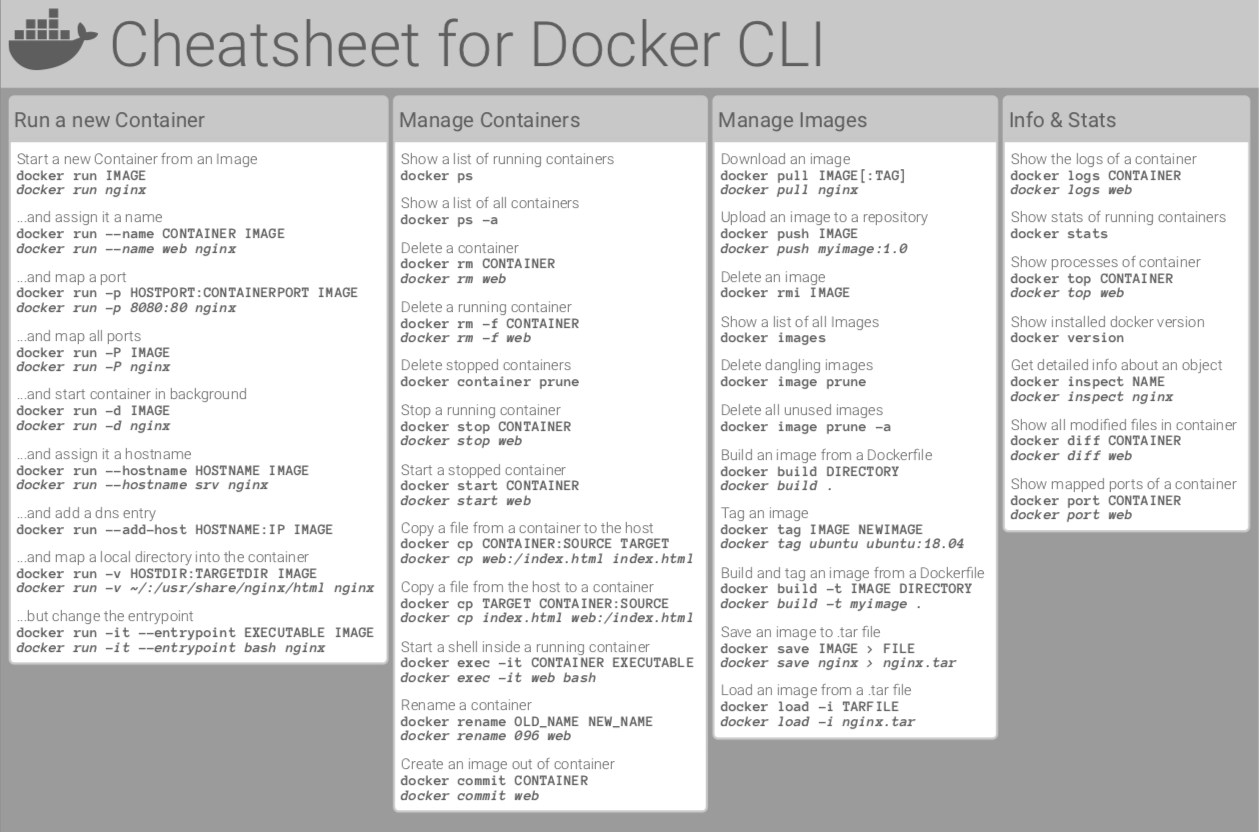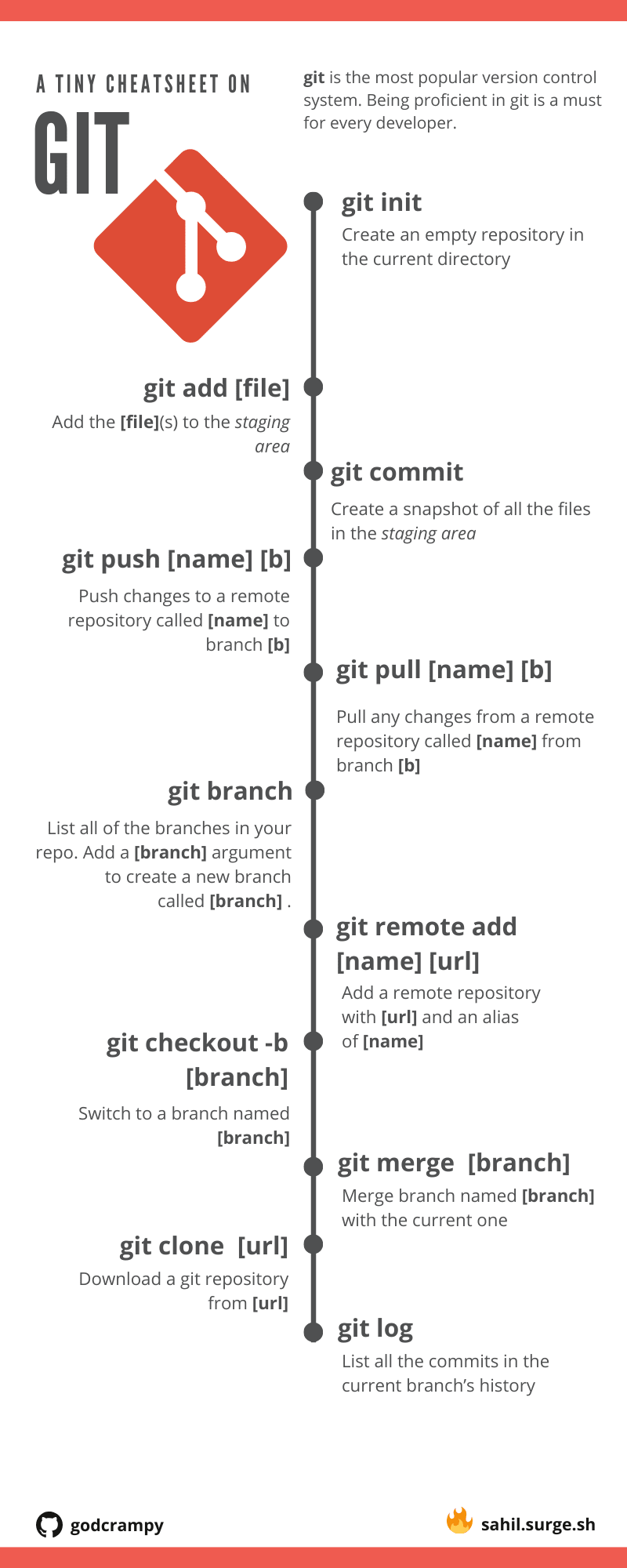

- Github commands cheat sheet update#
- Github commands cheat sheet software#
- Github commands cheat sheet download#
If the repository lies on a remote server, use: git clone is used to copy a repository.Alternatively, you can create a repository within a new directory by specifying the project name:.The following Git command will create a repository in the current directory: git init will create a new local GIT repository.Here are some basic GIT commands you need to know:
Github commands cheat sheet software#
The software may have a steep learning curve, but there are lots of GIT tutorials ready to help you. After you commit your changes, the snapshot of the changes will be saved into the git directory.Įveryone can use GIT as it is available for Linux, Windows, Mac, and Solaris. Then, the changes are staged (indexed) in the staging area. The working directory is where you add, delete, and edit the files. Companies and programmers usually use GIT to collaborate on developing software and applications.Ī GIT project consists of three major sections: the working directory, the staging area, and the git directory. GIT is the most widely used open-source VCS (version control system) that allows you to track changes made to files.

Let’s get started! Understanding the GIT Workflow Read on to discover our handy cheat sheet that you can use for daily reference. If you like this article or have any suggestions related to the git cheat sheet, please let us know by adding comments below.Need to learn some basic GIT commands? You’ve come to the right place. All Git commands that we have provided in this article are the most important git commands, and every interviewer expects you to know at least these commands.

Therefore, we only use those Git commands that are basic and necessary from our project’s POV. Git has hundreds of commands, and learning each of them is impossible and impractical. Pushes the local branch to the remote upstream. Pushes all the changes to the remote upstream. Switches the current branch to the target reference and leaves a difference as an uncommitted change.Ĭreates a new commit, reverting changes from the specified commit.įetches the changes and merges the current branch with upstream. This Git command lists operations such as commits and checkout.Ĭreates a tag reference name for the current commit. Gives an overview along with reference label and history graph. If name is not a branch in the repository, then create a new branch. It will show all the branches of the local repository. Gets the file back from the staging area. Shows changes between the staging area and the index.ĭiscards change in the working directory. It will create a clone of the project, which is at the remote repository of the project URL.ĭisplays changes between the working directory and the staging area. Else it will initialize git in the current directory. This command will create a new repository if the project name is provided. This command attaches the email address to the commits and tags.Įnables some colorization in the Git interface. Git config –global user.email “email address” Git config –-global user.name “User Name”Īttaches the name User Name to the commits and tags. Git Cheat Sheet Git Configuration Commands
Github commands cheat sheet update#
Push is used to update the remote branch if we have committed the changes. It represents the suggestion for changes to the master branch.

If one branch made any changes that we need to keep, we could use the merge command to make the same changes in all other repositories. It is the main branch of the repositories. Not all those changes will remain in the index for commit. In order to save any changes made to a project, we need to commit them. It represents the most current commit of the repository you’re currently working in. The commit at the tip of a branch is called the head.
Github commands cheat sheet download#
When we switch between branches, we use the checkout command.įetch commands can copy and download the branch file to your local device. It helps us to keep track of the changes happening in the various repositories. A branch represents the various versions and repositories branching out from your main project.


 0 kommentar(er)
0 kommentar(er)
